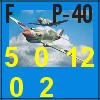FIREFIGHT'S NEW GAME
The Powder River campaign of 1865 had only one purpose: to search and then destroy Indians, wherever found. There were three columns of troops descending from different forts upon the Tongue and Powder Rivers in Wyoming and Montana. In charge of it all was Brig. General Connor, whose column of left Ft. Laramie and arrived at the Tongue to build a new military fort, Fort Connor, starting in mid-August. Two other columns, one under Col. Cole with 1400 men left Omaha on July 1, and another under Col. Walker, of 600 men, left Ft. Laramie. These two columns failed to find Connor’s troops but were able to meet each other near the Black Hills and then moved through the Badlands to the Powder reaching it at the start of September. These two columns were huge affairs comprising of 1200 horses,185 wagons and crossing areas with no roads.
Conner was greatly worried when the Walker and Cole columns failed to show up. It was for good cause. Neither Walker nor Cole had any experience whatsoever in fighting Indians, neither leader liked the other, neither knew anything about the area and both were recent transfers from the Civil War. Both men had the same rank. Adding to this were their men, many had been forced into the mission after they tried to mutiny because their enlistments were up. Thus, Conner sent out a posse to find the lost columns.
On Sept 1, the two columns reached the junction of the Powder River and Alkai Creek and were jumped by 300 indians, some had rifles. Once repelled, the column continued downstream to the Mizpah River and due to snow and ice cold weather well below zero, had lost 2-300 horses. Being lost, the columns then reversed and traveled upstream and by Sept 4, had left behind many supplies to reduce the load. On the 5th, Crazy Horse and Roman Nose attacked with 1000 indians and 12 rifles. The battle ran three hours. The columns artillery did an amazing job of keeping the Indians at bay, but soon ammo for artillery and rifles were rationed. Then food was rationed. After the three hour ordeal, none of the cavalry pursued the Indians, as many of the Cheyennes left. The reason were their horses were too weak from lack of food. The Lakotas remained in attack and harass mode and regrouped to attack in full on the 8th. By now, the columns had reached modern day Powderville, Montana (so far off course) when climatic conditions slammed them with minus 40 temps, ice and snow. There the column stopped. When the storm cleared, they had lost 600 horses. Many of the men were in tattered clothes. The Lakotas continued to harass and attack. Had the Indians more rifles, they easily could have finished off the columns.
Conner’s posse finally found them on the 13th, and redirected them towards Ft. Conner, some 80 miles away! Despite the impossible odds, the lost columns reached the fort on the 20th in despicable condition of a ragtag army. Many soldiers were shoeless and near death from starvation. They managed to survive by eating the dead horses. Only 600 sickly horses came back.
The Indians failed only because they lacked rifles, their bow and arrows, spears simply were not enough. Even though the Indians attacked at will against an ill trained, defense only force on rations, it was enough to make them ineffective. For the most part, it kept the Indians at bay.
Wednesday, January 5, 2011
Subscribe to:
Posts (Atom)


